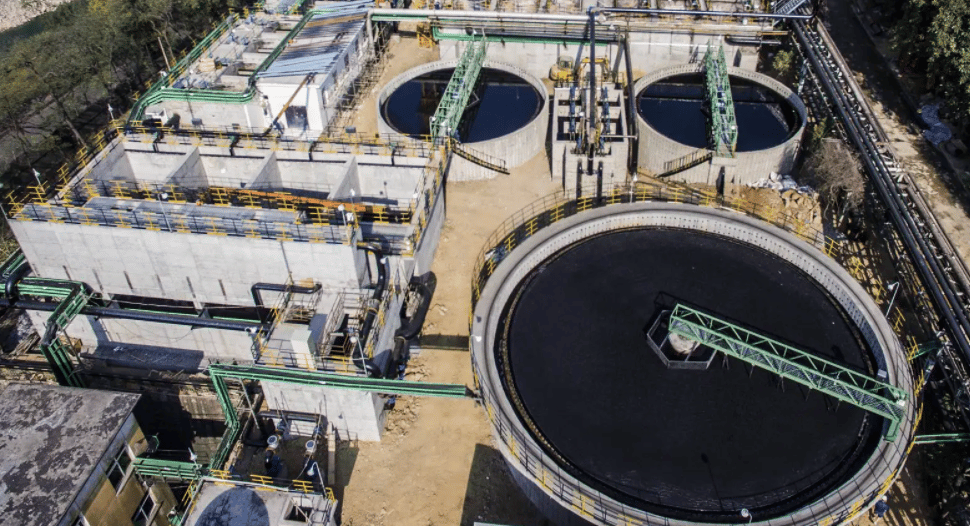Developments and Advances in Hazardous Waste Water Treatment Technologies
The landscape of commercial wastewater therapy is undertaking a transformative change, driven by innovations that enhance both efficiency and sustainability. As regulatory criteria develop, the combination of AI and maker discovering right into wastewater administration systems guarantees to guarantee and improve operations compliance.
Overview of Drainage Therapy Technologies
Wastewater therapy innovations include a variety of methods designed to get rid of impurities from industrial effluents before their launch right into the atmosphere. These technologies are crucial for maintaining eco-friendly equilibrium and making sure compliance with ecological guidelines. The main categories of wastewater therapy consist of physical, chemical, and biological approaches, each serving distinct objectives based on the nature of the contaminants existing.

Organic treatment techniques utilize microbes to deteriorate raw material, making them specifically effective for organic-rich effluents. Methods like turned on sludge and biofilm activators harness the all-natural degradation abilities of germs, bring about significant reductions in biochemical oxygen demand (BODY)
Advanced Filtering Methods
Advanced purification techniques represent a vital development in the world of commercial wastewater therapy, boosting the performance of impurity elimination procedures. Industrial Waste Water Treatment. These approaches incorporate a series of modern technologies, consisting of microfiltration, ultrafiltration, nanofiltration, and turn around osmosis, which supply consecutive obstacles for different bit dimensions and chemical structures
Microfiltration and ultrafiltration utilize membrane layer systems to get rid of put on hold solids, microorganisms, and bigger organic molecules, improving the quality of effluent before more therapy. Nanofiltration connects the space between ultrafiltration and reverse osmosis, effectively getting rid of divalent ions and natural substances, hence lowering the lots on downstream processes.
Reverse osmosis provides the highest degree of filtration by enabling only water and tiny particles to go through its semi-permeable membranes, making it ideal for redeeming top notch water from industrial effluents. Recent innovations in membrane layer technology, consisting of the advancement of more durable and fouling-resistant materials, have actually substantially improved functional effectiveness and reduced prices.
Integrating these innovative filtration methods not only improves the general therapy process yet also adds to sustainability initiatives by enabling water reuse and resource healing in industrial settings. (Industrial Waste Water Treatment)
Biological Treatment Technologies

Additionally, the growth of crafted biological systems, such as membrane bioreactors (MBRs), integrates biological treatment with sophisticated membrane purification. This assimilation enables for greater effluent top quality and reduced impact, making it suitable for space-constrained commercial facilities. Advancements in genetically engineered bacteria have actually likewise emerged, boosting the biodegradation of specific impurities, such as pharmaceuticals and hefty steels, that are typically challenging to get rid of.
Additionally, the application of bioaugmentation methods, where useful germs are introduced to improve the existing biological treatment procedures, has actually shown promising lead to boosting treatment efficiency. These innovations collectively signify a trend towards more reliable and sustainable organic treatment methods that can adapt to the progressing intricacies of commercial wastewater streams. As sectors continue to focus on ecological conformity, these biological technologies will play a vital duty in wastewater management.

Resource Recovery Methods
In commercial setups, the integration of source recovery approaches has come to be progressively vital for enhancing sustainability and reducing waste. These approaches concentrate on drawing out valuable products and power from wastewater streams, therefore changing possible pollutants right into recyclable resources.
One noticeable strategy is nutrient recuperation, where nitrogen and phosphorus, commonly present over in wastewater, are captured like it and exchanged plant foods. This not just minimizes ecological effects however likewise provides a circular economic situation option for farming applications. Furthermore, technologies such as anaerobic digestion enable the conversion of organic waste right into biogas, a renewable resource source that can balance out fossil fuel usage in commercial operations.
In addition, advanced purification and membrane modern technologies help with the healing of commercial spin-offs such as steels and salts. These recouped materials can be rehabilitated right into manufacturing processes, lowering the requirement for virgin resources.
Future Fads in Waste Water Management
As sectors significantly prioritize sustainability, the future of wastewater administration is readied to undertake considerable improvements. Technological advancements, such as expert system and device learning, will certainly enable extra effective monitoring and management of wastewater systems. These technologies can forecast upkeep demands, optimize treatment processes, and enhance decision-making, ultimately lowering functional costs and environmental influence.
Additionally, the combination of round economic climate concepts will play a crucial role in wastewater administration. Industries are anticipated to move in the direction of systems that not just treat wastewater however additionally recover useful sources, such as nutrients, water, and energy. This change will minimize waste and promote the reuse of products, straightening with global sustainability objectives.
Arising therapy methods, such as membrane layer bioreactors and advanced oxidation procedures, will better enhance the performance of wastewater treatment, permitting better effluents suitable for reuse. Additionally, regulatory structures are likely to evolve, learn this here now emphasizing stricter requirements for wastewater discharge and motivating markets to embrace cutting-edge therapy services.
Final Thought
In verdict, the development of industrial wastewater therapy modern technologies shows a significant change towards improved performance and sustainability (Industrial Waste Water Treatment). Innovations in sophisticated purification techniques, organic treatments, and source healing techniques highlight the market's commitment to environmental stewardship.
The landscape of commercial wastewater therapy is undergoing a transformative shift, driven by developments that improve both effectiveness and sustainability.Wastewater treatment technologies incorporate a variety of techniques designed to get he has a good point rid of contaminants from commercial effluents before their launch right into the atmosphere.Using the power of organic processes has led to significant technologies in the therapy of commercial wastewater.Furthermore, the execution of bioaugmentation methods, where advantageous germs are introduced to improve the existing organic treatment processes, has actually shown promising outcomes in improving therapy performance. These developments collectively indicate a pattern in the direction of more lasting and effective biological treatment methods that can adjust to the advancing intricacies of commercial wastewater streams.
Comments on “Industrial Waste Water Treatment-- Eco-Friendly Solutions for Water Recycling”